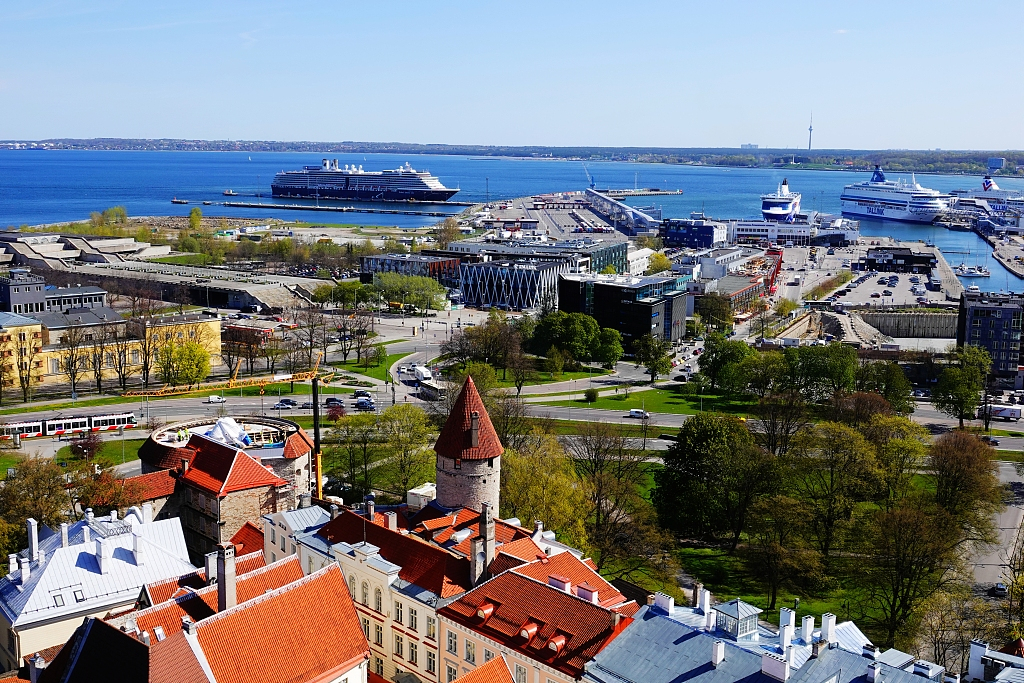

Editor's note: Andrew Korybko is a Moscow-based American political analyst. The article reflects the author's opinions and not necessarily the views of CGTN.
East-West integration took a step forward on July 12 when it was announced that three Chinese companies will help construct the Tallinn Tunnel linking the Estonian and Finnish capitals under the Gulf of Finland. The project is expected to greatly contribute to the regional Three Seas Initiative's (TSI) connectivity with China's Belt & Road Initiative (BRI).
The TSI is a regional platform for Central and Eastern European countries to enhance their comprehensive cooperation with one another. One of its focal points is physical integration between its members, hence why China has partnered with the over a dozen nations that overlap with the Central and Eastern European countries and China commonly known as CEEC-China or 17+1 after Greece's recent inclusion.
The centerpiece of China's BRI investment in the region is the high-speed railway that it's planning to build from the Hungarian capital of Budapest to the Greek port of Piraeus (the "Balkan Silk Road"). But it can be argued that the Tallinn Tunnel is equally important because it'll link Finland with the Baltic States in as strategic a manner as Beijing is attempting in the Balkans.
Although Finland isn't a member of the TSI or the 17+1, it's nevertheless a part of the EU and poised to link itself more closely with those two through the Tallinn Tunnel, so it can be considered as part of the same larger economic space that China is working very hard to make positive inroads with.
The grand strategy that China is apparently advancing through its investments in the Balkan Silk Road and the Tallinn Tunnel is North-South connectivity throughout Central and Eastern Europe. It perfectly complements the goals of both the TSI and the 17+1, as well as lays the basis for more East-West trade between China and the EU.

The Helsinki Cathedral in the center of Helsinki, Finland. /VCG Photo
This latter observation might be a curious one for most readers who don't understand how North-South connectivity within Europe can facilitate East-West trade between the EU and China, so it's important to elaborate a little bit on how this larger vision is supposed to play out in practice.
It shouldn't be forgotten that most of China's trade with Europe is conducted across maritime routes, chiefly through the Suez Canal and soon across the Northern Sea Route in the Arctic.
Against this strategic backdrop, the creation of a Chinese-backed Arctic-Mediterranean Corridor in Central and Eastern European would greatly facilitate the region's trade with the East Asian country, though some crucial infrastructural gaps remain that must first be plugged for this to happen.
Prior to the announcement that China would help build the Tallinn Tunnel, the two preexisting North-South regional integration projects were the Balkan Silk Road and the Rail Baltica project between Poland and the Baltic States.
The Tallinn Tunnel will connect the Estonian and Finnish capitals, which are already linked by rail to the near-Arctic town of Rovaniemi, thus creating a Finnish-Polish corridor.

Tallinn, the Estonian capital. /VCG Photo
To reach the Arctic Ocean, however, Finland would need to cooperate with Norway in building a rail route through the proposed Arctic Corridor between Rovaniemi and its neighbor's nearby port of Kirkenes. Meanwhile, the Mediterranean portion would require a more efficient Warsaw-Budapest rail link than the existing one to reach completion.
While no serious progress has been made in plugging those two gaps as of yet, the news that China will help construct the Tallinn Tunnel might fill investors with more optimism and get them to see the bigger picture of win-win connectivity that Beijing is painting through its BRI projects.
This underwater megaproject is therefore crucial because it proves that China is serious about streamlining North-South integration across the Central and Eastern European space, investing in both the Tallinn Tunnel in the north and the Balkan Silk Road in the south.
That should inspire European entrepreneurs and the relevant national governments to explore the various options available for plugging the two remaining Arctic Corridor gaps and the de facto one that exists between Warsaw and Budapest as a result of their inefficient rail connectivity. With both initiatives possibly being done in cooperation with China, this could serve as an impetus for more regional development that will inevitably lead to more opportunities for everyone in the 21st century.
(If you want to contribute and have specific expertise, please contact us at opinions@cgtn.com.)

Copyright © 2018 CGTN. Beijing ICP prepared NO.16065310-3
Copyright © 2018 CGTN. Beijing ICP prepared NO.16065310-3